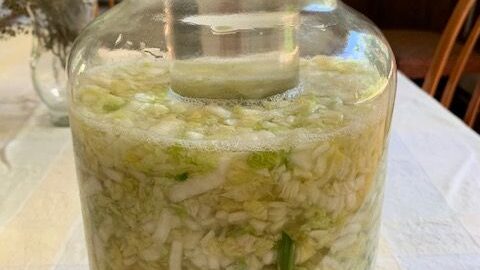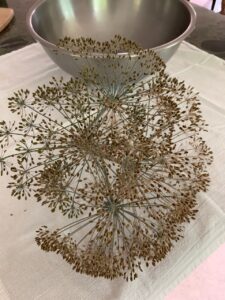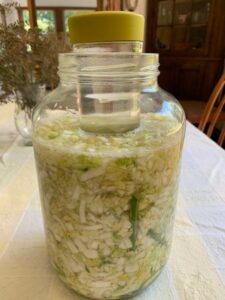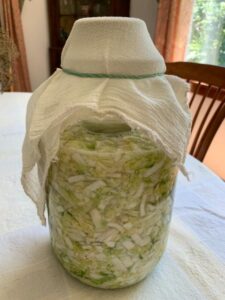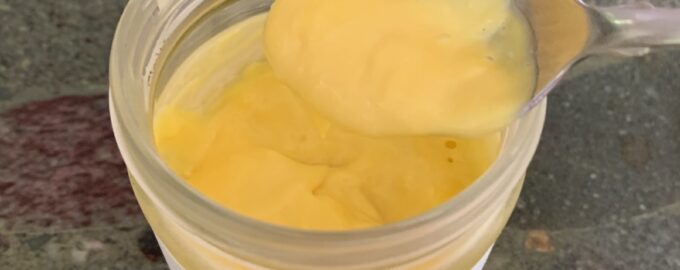Don’t throw away the juice from your cultured vegetables–some people drink it (in small amounts or diluted because it is salty) but I discovered it makes very good salad dressing! It may be hard to believe–sauerkraut juice in salad dressing?–but made as I describe below it is delicious. You’ll need a blender.
1-1/2 cups of salad dressing
1/2 cup sauerkraut juice
1/2 avocado
1-2 tsp. honey (you could try monk fruit instead but I like the honey)
1 Tbsp. apple cider vinegar (I use the vinegar from marinated red onions)
1/4 cup extra-virgin olive oil
Place all ingredients in a blender and blend well. You should not have to add salt as the sauerkraut juice is salty.
